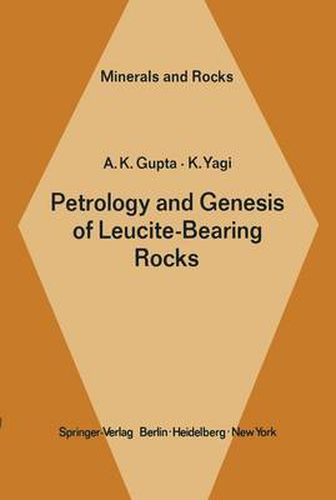Readings Newsletter
Become a Readings Member to make your shopping experience even easier.
Sign in or sign up for free!
You’re not far away from qualifying for FREE standard shipping within Australia
You’ve qualified for FREE standard shipping within Australia
The cart is loading…






This title is printed to order. This book may have been self-published. If so, we cannot guarantee the quality of the content. In the main most books will have gone through the editing process however some may not. We therefore suggest that you be aware of this before ordering this book. If in doubt check either the author or publisher’s details as we are unable to accept any returns unless they are faulty. Please contact us if you have any questions.
Many interesting and perplexing questions arise in connection with the highly potassic volcanic associa- tion dominated by mafic and ultramafic rocks contain- ing leucite. Its occurrence is very restricted as compar- ed with the olivine-basalt trachyte kindred, but it is distributed at widely scattered points on all the conti- nents, and its chemical and petrographic individuality is both remarkable and constant. A considerable litera- ture is available related to the mineralogy, petrology, geochemistry, phase chemistry, distribution, and origin of this interesting suite of rocks. It seemed that there was a genuine need for a review-synthesis of all these data, which would be intelligible to a wide spectrum of advanced students and professionals in the earth sciences. The monograph may be divided into two parts. The first part consists of six chapters in which the mineralogical and chemical peculiarities of leucite- bearing rocks and their nomenclature, petrology, min- eralogy, distribution, and physical and chemical condi- tions of formation are discussed. Phase equilibria stud- ies on many leucite-bearing ternary, pseudoternary, quaternary, and pseudoquaternary joins and systems, studied by different investigators at variable tempera- tures in air, are described in the second part in Chap- ters 7 to 12. Survival of leucite and formation of pseu- doleucite is discussed in Chapter 13. Leucite-bearing synthetic and natural rock systems studied at different temperatures under variable pressures in presence or absence of water, are summarized in Chapters 14 and 15.
$9.00 standard shipping within Australia
FREE standard shipping within Australia for orders over $100.00
Express & International shipping calculated at checkout
This title is printed to order. This book may have been self-published. If so, we cannot guarantee the quality of the content. In the main most books will have gone through the editing process however some may not. We therefore suggest that you be aware of this before ordering this book. If in doubt check either the author or publisher’s details as we are unable to accept any returns unless they are faulty. Please contact us if you have any questions.
Many interesting and perplexing questions arise in connection with the highly potassic volcanic associa- tion dominated by mafic and ultramafic rocks contain- ing leucite. Its occurrence is very restricted as compar- ed with the olivine-basalt trachyte kindred, but it is distributed at widely scattered points on all the conti- nents, and its chemical and petrographic individuality is both remarkable and constant. A considerable litera- ture is available related to the mineralogy, petrology, geochemistry, phase chemistry, distribution, and origin of this interesting suite of rocks. It seemed that there was a genuine need for a review-synthesis of all these data, which would be intelligible to a wide spectrum of advanced students and professionals in the earth sciences. The monograph may be divided into two parts. The first part consists of six chapters in which the mineralogical and chemical peculiarities of leucite- bearing rocks and their nomenclature, petrology, min- eralogy, distribution, and physical and chemical condi- tions of formation are discussed. Phase equilibria stud- ies on many leucite-bearing ternary, pseudoternary, quaternary, and pseudoquaternary joins and systems, studied by different investigators at variable tempera- tures in air, are described in the second part in Chap- ters 7 to 12. Survival of leucite and formation of pseu- doleucite is discussed in Chapter 13. Leucite-bearing synthetic and natural rock systems studied at different temperatures under variable pressures in presence or absence of water, are summarized in Chapters 14 and 15.